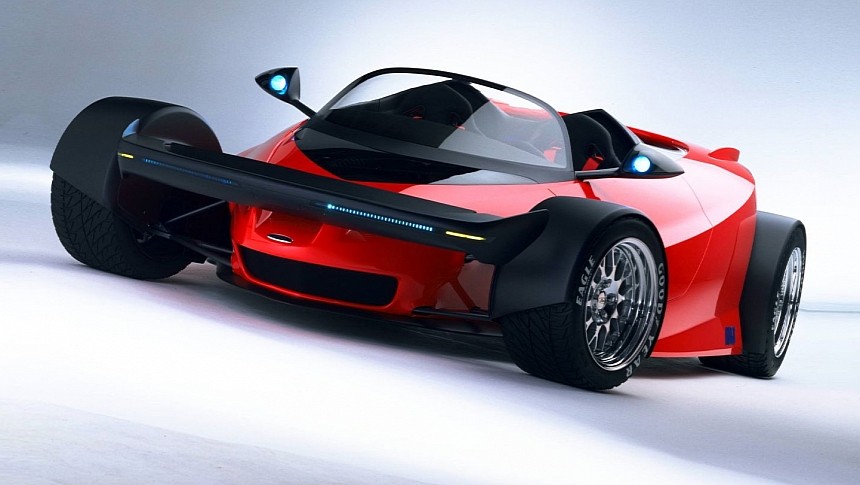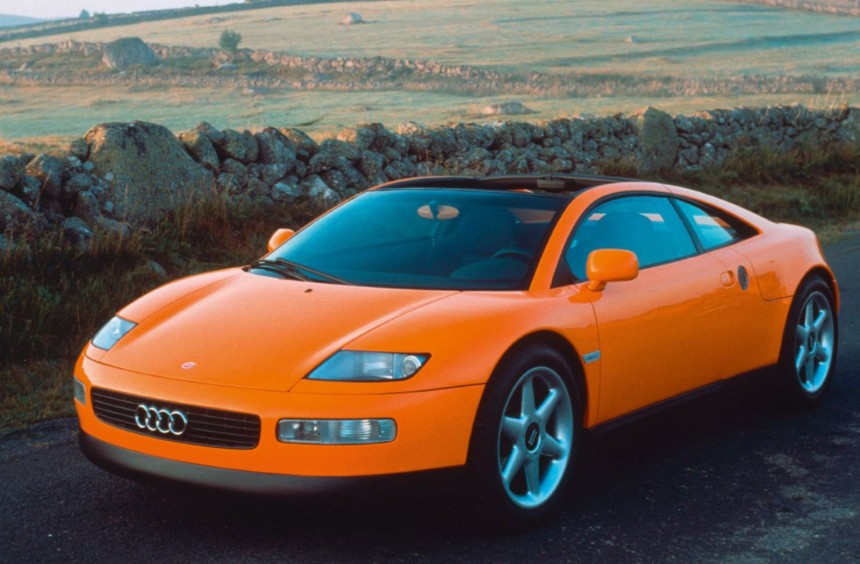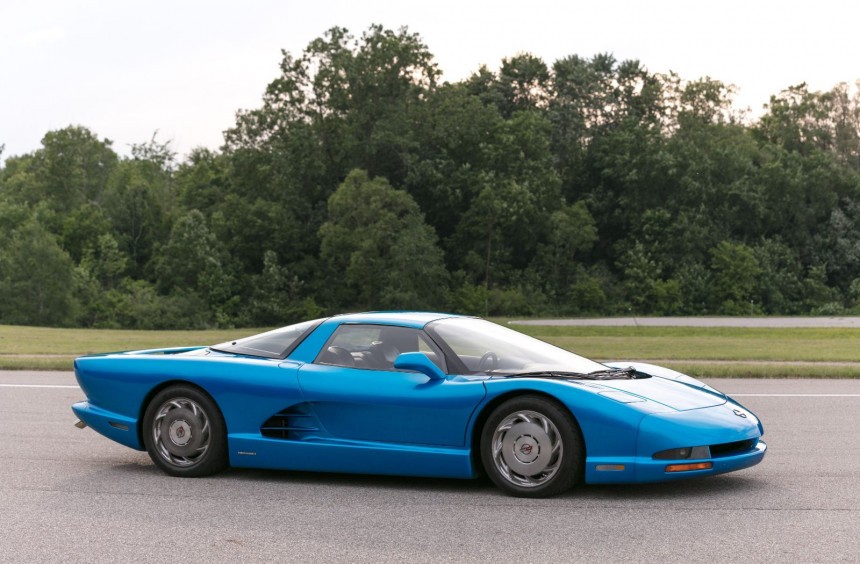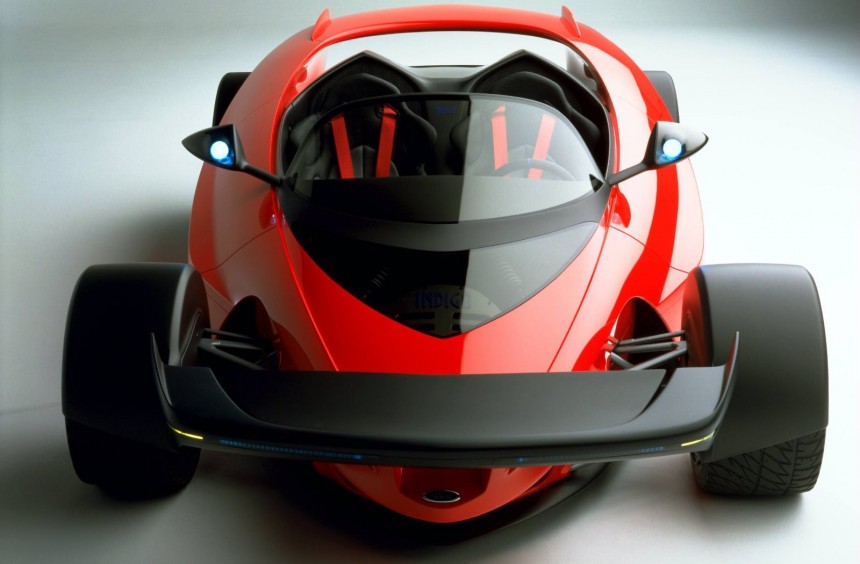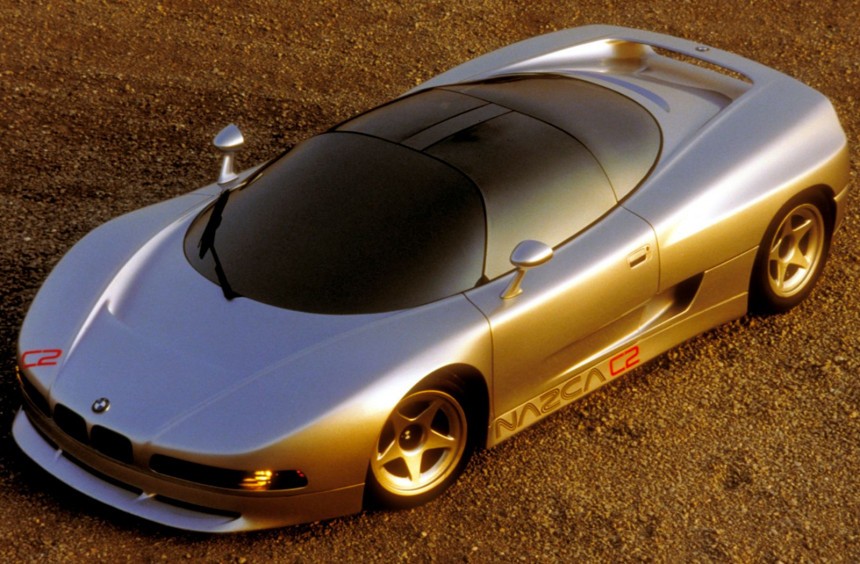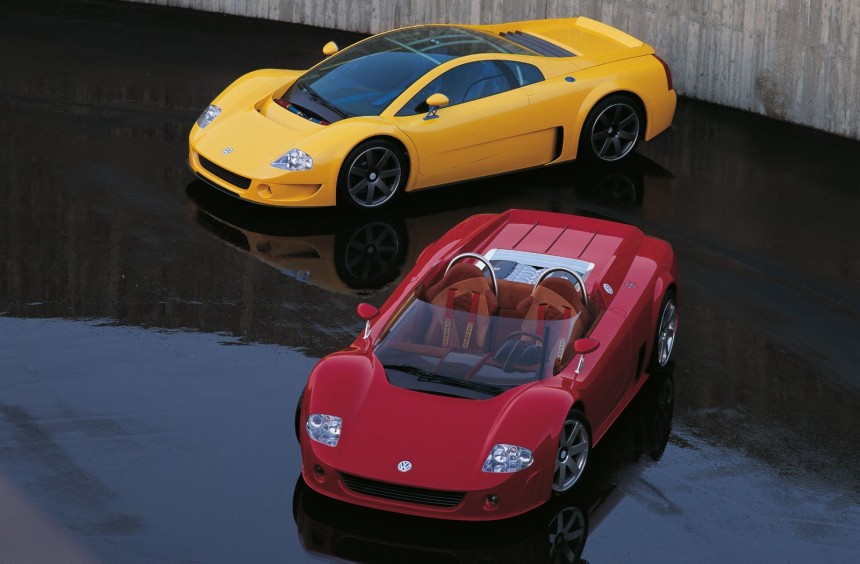Plenty of fascinating concepts were conceived during the 1990s. Some were too outlandish to make it onto public roads and deserved to remain one-offs, but these five were so good that we still regret they didn't make it into production.
Since Buick unveiled the Harley J. Earl-designed Y-Job in 1938, carmakers have habitually showcased new styling trends and technologies by creating breathtaking concepts.
Some were so well-received that they spawned closely related production models, while others just served to draw attention to innovations and boost the reputation of the brands that developed them.
The 1990s were a decade when the notion of a concept car was taken to the next level of beauty and innovation.
If, like myself, you grew up during that decade and fell in love with mid-engine sports cars, I'm sure you're familiar with at least a few of the following concepts and wish they entered production.
When Audi introduced the original Quattro two-door coupe in 1980, it revolutionized the sports car industry and the world of rallying.
Equipped with the company's proprietary quattro system, it proved that 4WD had a bright future in sports and racing cars.
About a decade later, at the 1991 Frankfurt Motor Show, the German carmaker showcased what a modern 4WD sports car should look like when it unveiled the Quattro Spyder.
The concept's aluminum body looked more like a Ferrari than any of Audi's production models, and although it was dubbed Spyder, it was a two-door coupe with a removable top.
Built on a bespoke chassis, the Quattro Spyder was powered by a slightly modified, mid-mounted version of the 172-hp 2.8-liter V6 from the Audi 100.
As the concept's name implies, the engine drove all four wheels through a custom version of Audi's existing quattro system, and although it only made 172 hp, Audi planned to replace it with a more powerful V8.
The Quattro Spyder was not just a concept meant exclusively for the show car circuit. Audi seriously considered a production run, but the high production cost and the volatility of the sports car led management to abandon all production plans.
Though we eventually got the R8, we're still lusting for the Spyder Quattro, which had all the right ingredients to become a sports car legend.
The C8 might be the first Production Corvette to feature a mid-mounted engine, but ever since the 1960s, Chevrolet has built a series of mid-engine Corvette concepts.
One of the most breathtaking was the Corvette Indy, which wowed the crowds at the 1986 North American International Auto Show.
The Indy was created as a pure show car, but the overwhelmingly positive reaction from the public and the press convinced GM higher-ups to continue the project.
Therefore, in 1990, the Corvette CERV III was introduced. Very similar to the Indy, but with a series of upgrades - including a new front end with pop-up headlights, the CERV III was more of a production candidate than its predecessor.
It carried over the all-wheel-drive, four-wheel steering, and active suspension from the Indy, but instead of the race-bred twin-turbo V8, it was now powered by the C4 ZR-1's Lotus-designed LT5 V8.
Nevertheless, the engine wasn't a standard LT5, as it received a pair of Garrett T5 turbos that pushed output to 650 hp.
The CERV III almost made it into Production, but like the Audi Quattro Spyder, it was killed off by the period's sports car market volatility. The car would've been nearly ten times more expensive than a standard C4, so management decided to cancel the project.
For the 1996 Detroit Auto Show, Jac Nasser, Ford's vice president, wanted to blow people's minds with the coolest car of the event.
Since the company didn't happen to have such a never-before-seen car lying around in storage somewhere, Nasser instructed Claude Lobo, the head of the Advanced Design Studio, to build one.
Lobo quickly assembled a small team of talented employees and went to work.
About six months later, the team had put together an insane Indycar-inspired two-seat open-wheeler that looked insanely cool from every angle.
Built around a carbon-fiber monocoque chassis covered by a beautifully sculptured body made from the same material, the concept christened Indigo featured an IndyCar-derived suspension system with pushrods and inboard coil-over shocks, as well as high-performance Brembo brakes closely related to those of the era's Formula 1 car.
The team actually went on to build two examples. One was a static showpiece, and the other was fully functional.
The latter was powered by a custom all-aluminum V12 developed in collaboration with Cosworth. The 6.0-liter was rated at 435 hp and 405 lb-ft (549 Nm) of torque.
The Indigo was the star of the 1996 Detroit Auto Show. Of course, the public demanded a production version, but unlike the previous concepts on our list, the open-wheeler was built exclusively for the show car circuit, so an actual production run was never considered.
Giorgetto Giugiaro has created many iconic production cars like the VW Golf, Audi 80, De Tomaso Mangusta, and Lancia Delta - to name a few.
However, the famed Italian stylist also designed a series of stunning concept cars, and the BMW Nazca C2 remains one of the most famous.
The project began in 1991 when Giugiaro's Italdesign partnered with BMW to create a mid-engine concept car called Nazca M12 for that year's Tokyo Motor Show.
A year later, the design was thoroughly revised, and the Nazca C2 was born.
Made almost entirely out of carbon fiber, the silver concept could've been easily mistaken for a futuristic Ferrari or Lamborghini - if it didn't feature the iconic BMW kidney grilles.
But the grilles weren't the only thing distinctively BMW. Many components from the German carmaker's production models were used on the C2, and, of course, the mid-mounted engine was a BMW unit.
Borrowed from the BMW 850i, the 5.0-liter V12 was tuned by Alpina and developed. 295 hp. That wasn't much, even for the era, but since the car weighed 2,295 pounds (1,041 kg) and its body had a very low drag coefficient, it was enough for a 193 mph (311 kph) top speed.
The original 1992 Nazca C2 was joined by an open-top version a year later, and rumors of a limited production run were abundant. Though BMW considered launching an M1 successor based on the C2, the company ultimately decided to stay put.
Another memorable concept designed by Giorgetto Giugiaro was the W12 - probably the most un-Volkswagen car ever created.
The W12 project started in the second part of the 1990s when Volkswagen Group CEO Ferdinand Piech decided that the brand famous for building affordable cars for the masses needed a supercar in its ranks.
While Giugiaro and his Italdesign team were tasked with designing the exterior, VW engineers went to work to create a novel W12 engine and a custom chassis equipped with the brand's Syncro 4WD system.
The project's first functional concept car, dubbed W12 Syncro, was unveiled in 1997 at the Tokyo Motor Show. It received a spectacular coupe body with scissor doors and was powered by a 414-hp naturally-aspirated W12.
A year later, the Spyder version was completed in time for the 1998 Geneva Auto Show. The example dropped the heavy Syncro for a conventional RWD layout but featured the same 414-hp engine.
The third, most insane version of the VW supercar was introduced in 2001.
Called Nardò, after VW's test track, the new concept retained the Spyder's RWD but received a revised body, a lighter chassis, and an upgraded 6.0-liter W12 rated at 591 hp.
The Nardò was also thoroughly tested on the track it shared its name with. In 2002, it proved just how fast and reliable it was by covering 4,809 miles (7,739 km) in 24 hours at an average speed of 200.6 mph (322.8 kph) - a feat that resulted in seven world records and twelve international class records.
Though a production run was briefly considered, by the time the Nardò was introduced, the VW Group had already acquired Bugatti and Lamborghini, so a VW-badged supercar that would compete directly with those brands' flagship models made no practical sense.
Some were so well-received that they spawned closely related production models, while others just served to draw attention to innovations and boost the reputation of the brands that developed them.
The 1990s were a decade when the notion of a concept car was taken to the next level of beauty and innovation.
If, like myself, you grew up during that decade and fell in love with mid-engine sports cars, I'm sure you're familiar with at least a few of the following concepts and wish they entered production.
Audi Quattro Spyder
Equipped with the company's proprietary quattro system, it proved that 4WD had a bright future in sports and racing cars.
About a decade later, at the 1991 Frankfurt Motor Show, the German carmaker showcased what a modern 4WD sports car should look like when it unveiled the Quattro Spyder.
The concept's aluminum body looked more like a Ferrari than any of Audi's production models, and although it was dubbed Spyder, it was a two-door coupe with a removable top.
Built on a bespoke chassis, the Quattro Spyder was powered by a slightly modified, mid-mounted version of the 172-hp 2.8-liter V6 from the Audi 100.
As the concept's name implies, the engine drove all four wheels through a custom version of Audi's existing quattro system, and although it only made 172 hp, Audi planned to replace it with a more powerful V8.
The Quattro Spyder was not just a concept meant exclusively for the show car circuit. Audi seriously considered a production run, but the high production cost and the volatility of the sports car led management to abandon all production plans.
Though we eventually got the R8, we're still lusting for the Spyder Quattro, which had all the right ingredients to become a sports car legend.
Chevrolet Corvette CERV III
One of the most breathtaking was the Corvette Indy, which wowed the crowds at the 1986 North American International Auto Show.
The Indy was created as a pure show car, but the overwhelmingly positive reaction from the public and the press convinced GM higher-ups to continue the project.
Therefore, in 1990, the Corvette CERV III was introduced. Very similar to the Indy, but with a series of upgrades - including a new front end with pop-up headlights, the CERV III was more of a production candidate than its predecessor.
It carried over the all-wheel-drive, four-wheel steering, and active suspension from the Indy, but instead of the race-bred twin-turbo V8, it was now powered by the C4 ZR-1's Lotus-designed LT5 V8.
Nevertheless, the engine wasn't a standard LT5, as it received a pair of Garrett T5 turbos that pushed output to 650 hp.
The CERV III almost made it into Production, but like the Audi Quattro Spyder, it was killed off by the period's sports car market volatility. The car would've been nearly ten times more expensive than a standard C4, so management decided to cancel the project.
Ford Indigo
Since the company didn't happen to have such a never-before-seen car lying around in storage somewhere, Nasser instructed Claude Lobo, the head of the Advanced Design Studio, to build one.
Lobo quickly assembled a small team of talented employees and went to work.
About six months later, the team had put together an insane Indycar-inspired two-seat open-wheeler that looked insanely cool from every angle.
Built around a carbon-fiber monocoque chassis covered by a beautifully sculptured body made from the same material, the concept christened Indigo featured an IndyCar-derived suspension system with pushrods and inboard coil-over shocks, as well as high-performance Brembo brakes closely related to those of the era's Formula 1 car.
The team actually went on to build two examples. One was a static showpiece, and the other was fully functional.
The latter was powered by a custom all-aluminum V12 developed in collaboration with Cosworth. The 6.0-liter was rated at 435 hp and 405 lb-ft (549 Nm) of torque.
The Indigo was the star of the 1996 Detroit Auto Show. Of course, the public demanded a production version, but unlike the previous concepts on our list, the open-wheeler was built exclusively for the show car circuit, so an actual production run was never considered.
BMW Nazca C2
However, the famed Italian stylist also designed a series of stunning concept cars, and the BMW Nazca C2 remains one of the most famous.
The project began in 1991 when Giugiaro's Italdesign partnered with BMW to create a mid-engine concept car called Nazca M12 for that year's Tokyo Motor Show.
A year later, the design was thoroughly revised, and the Nazca C2 was born.
Made almost entirely out of carbon fiber, the silver concept could've been easily mistaken for a futuristic Ferrari or Lamborghini - if it didn't feature the iconic BMW kidney grilles.
But the grilles weren't the only thing distinctively BMW. Many components from the German carmaker's production models were used on the C2, and, of course, the mid-mounted engine was a BMW unit.
Borrowed from the BMW 850i, the 5.0-liter V12 was tuned by Alpina and developed. 295 hp. That wasn't much, even for the era, but since the car weighed 2,295 pounds (1,041 kg) and its body had a very low drag coefficient, it was enough for a 193 mph (311 kph) top speed.
The original 1992 Nazca C2 was joined by an open-top version a year later, and rumors of a limited production run were abundant. Though BMW considered launching an M1 successor based on the C2, the company ultimately decided to stay put.
Volkswagen W12
The W12 project started in the second part of the 1990s when Volkswagen Group CEO Ferdinand Piech decided that the brand famous for building affordable cars for the masses needed a supercar in its ranks.
While Giugiaro and his Italdesign team were tasked with designing the exterior, VW engineers went to work to create a novel W12 engine and a custom chassis equipped with the brand's Syncro 4WD system.
The project's first functional concept car, dubbed W12 Syncro, was unveiled in 1997 at the Tokyo Motor Show. It received a spectacular coupe body with scissor doors and was powered by a 414-hp naturally-aspirated W12.
A year later, the Spyder version was completed in time for the 1998 Geneva Auto Show. The example dropped the heavy Syncro for a conventional RWD layout but featured the same 414-hp engine.
The third, most insane version of the VW supercar was introduced in 2001.
Called Nardò, after VW's test track, the new concept retained the Spyder's RWD but received a revised body, a lighter chassis, and an upgraded 6.0-liter W12 rated at 591 hp.
The Nardò was also thoroughly tested on the track it shared its name with. In 2002, it proved just how fast and reliable it was by covering 4,809 miles (7,739 km) in 24 hours at an average speed of 200.6 mph (322.8 kph) - a feat that resulted in seven world records and twelve international class records.
Though a production run was briefly considered, by the time the Nardò was introduced, the VW Group had already acquired Bugatti and Lamborghini, so a VW-badged supercar that would compete directly with those brands' flagship models made no practical sense.
